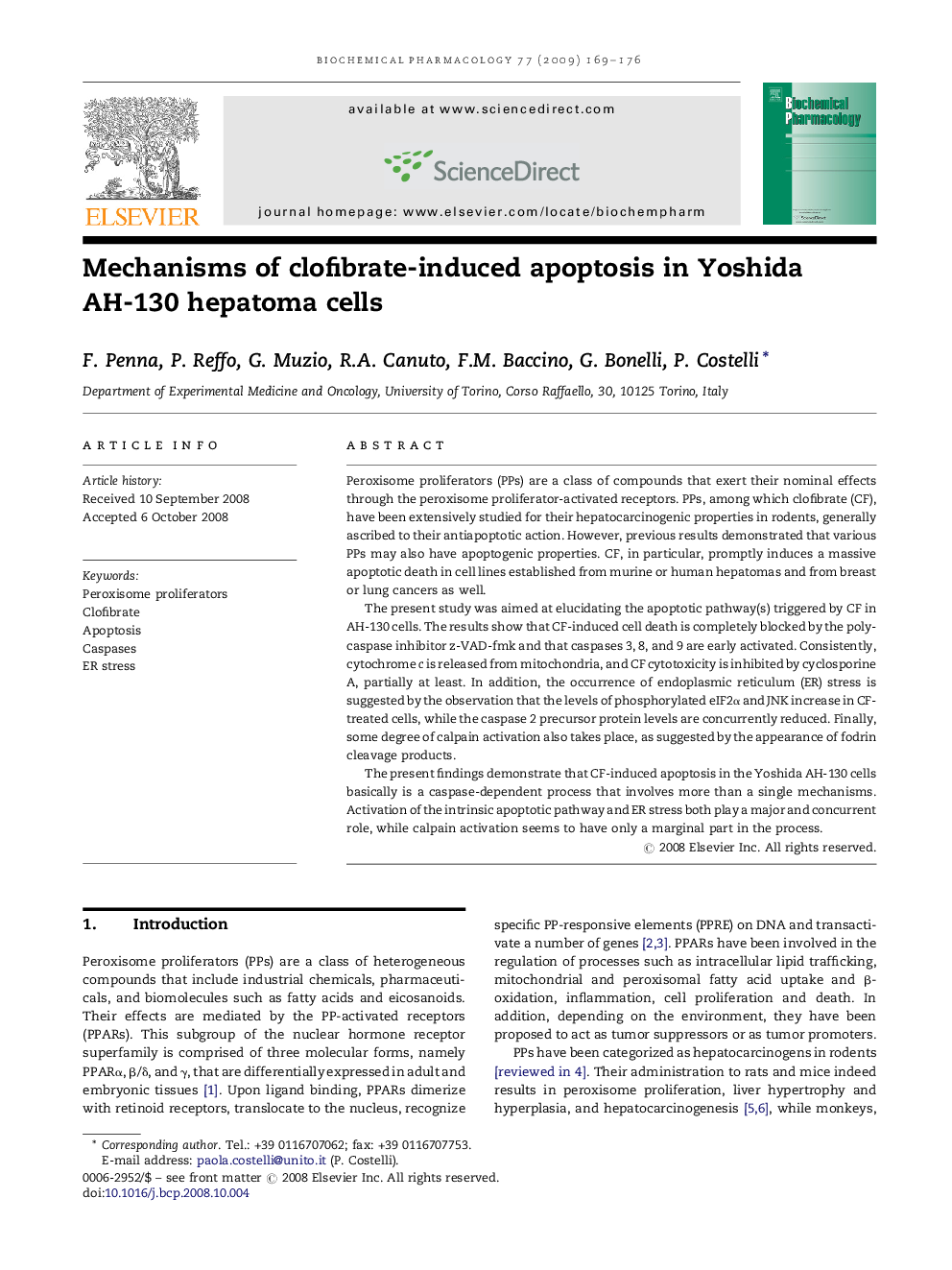| Article ID | Journal | Published Year | Pages | File Type |
|---|---|---|---|---|
| 2513968 | Biochemical Pharmacology | 2009 | 8 Pages |
Peroxisome proliferators (PPs) are a class of compounds that exert their nominal effects through the peroxisome proliferator-activated receptors. PPs, among which clofibrate (CF), have been extensively studied for their hepatocarcinogenic properties in rodents, generally ascribed to their antiapoptotic action. However, previous results demonstrated that various PPs may also have apoptogenic properties. CF, in particular, promptly induces a massive apoptotic death in cell lines established from murine or human hepatomas and from breast or lung cancers as well.The present study was aimed at elucidating the apoptotic pathway(s) triggered by CF in AH-130 cells. The results show that CF-induced cell death is completely blocked by the poly-caspase inhibitor z-VAD-fmk and that caspases 3, 8, and 9 are early activated. Consistently, cytochrome c is released from mitochondria, and CF cytotoxicity is inhibited by cyclosporine A, partially at least. In addition, the occurrence of endoplasmic reticulum (ER) stress is suggested by the observation that the levels of phosphorylated eIF2α and JNK increase in CF-treated cells, while the caspase 2 precursor protein levels are concurrently reduced. Finally, some degree of calpain activation also takes place, as suggested by the appearance of fodrin cleavage products.The present findings demonstrate that CF-induced apoptosis in the Yoshida AH-130 cells basically is a caspase-dependent process that involves more than a single mechanisms. Activation of the intrinsic apoptotic pathway and ER stress both play a major and concurrent role, while calpain activation seems to have only a marginal part in the process.
